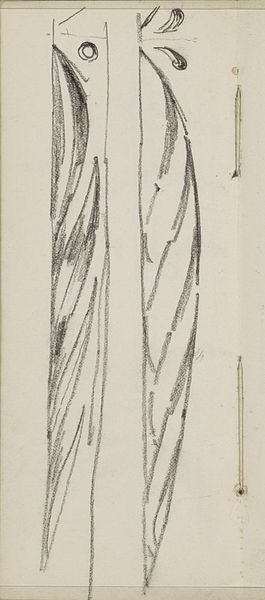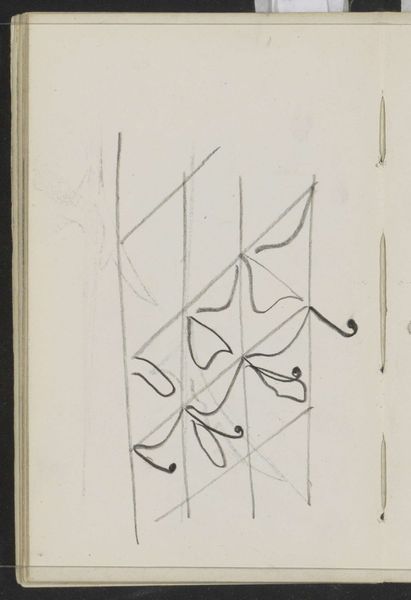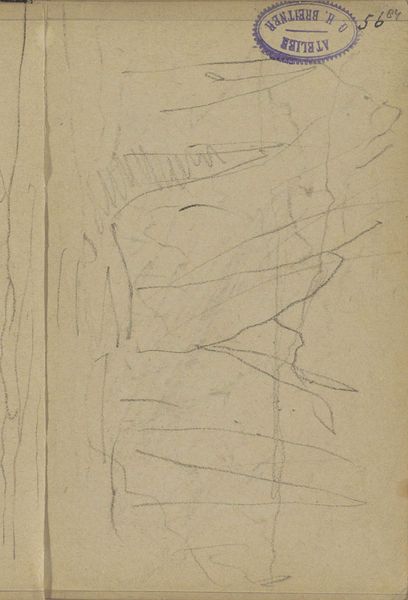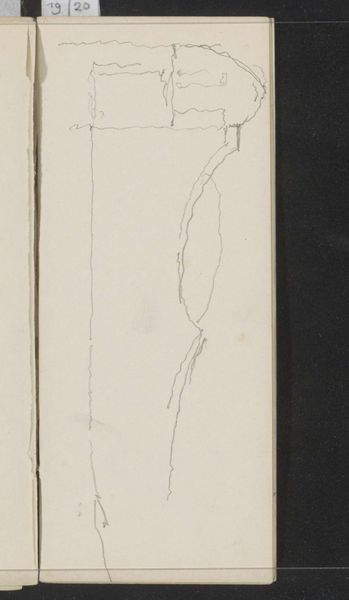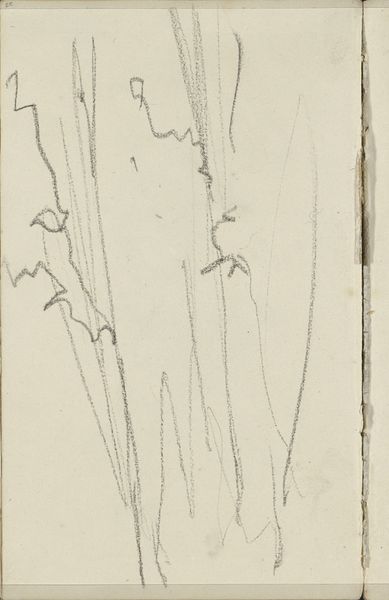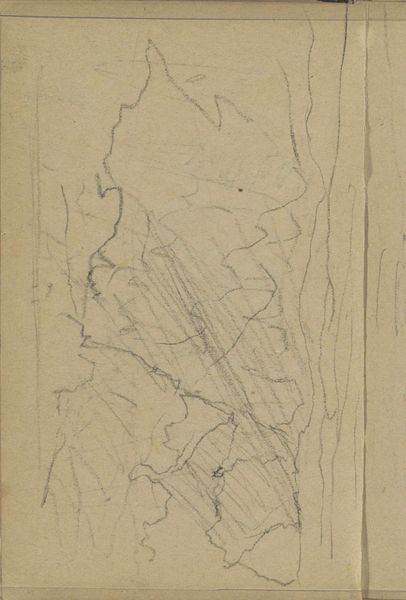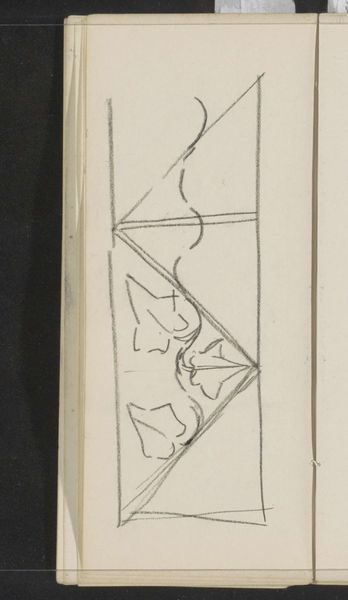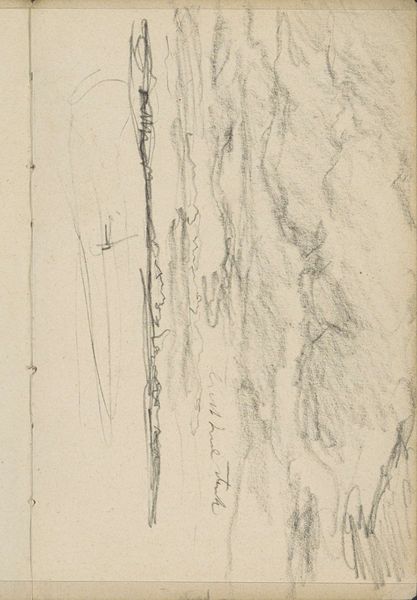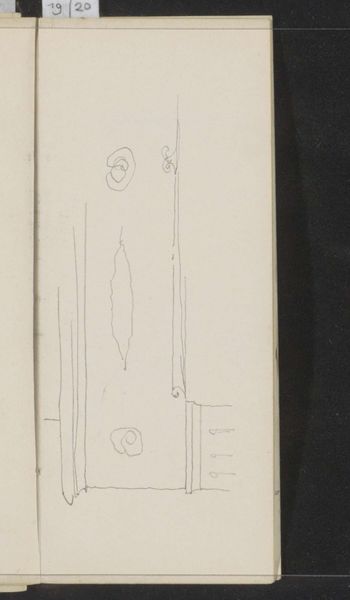
drawing, paper, pencil, graphite
#
drawing
#
organic
#
paper
#
pencil
#
abstraction
#
line
#
graphite
Copyright: Rijks Museum: Open Domain
Curator: Before us is "Plantmotief," a pencil and graphite drawing on paper by Carel Adolph Lion Cachet, created sometime between 1874 and 1945. Editor: It feels like a whisper, this drawing. The delicate lines evoke a sense of fragility, like tracing a fleeting memory. What's your initial read? Curator: My eye is drawn to the geometric grid underlying the plant forms. It feels almost like a controlled chaos, doesn’t it? During this period, Cachet was likely influenced by movements towards abstraction, maybe even the beginnings of thinking about organic forms as political metaphors, responding perhaps to colonial structures in his native country of the Dutch East Indies? Editor: That grid is interesting. To me, it suggests a garden trellis, a framework upon which nature is cultivated. I wonder if the abstracted plant motifs are signifiers, representing something beyond mere botanical interest, connecting to Cachet’s cultural identity? Curator: Possibly. Given the time frame, the drawing might have been influenced by the ethical policies debated at the time that eventually called for greater recognition of indigenous cultures and traditions in the Dutch East Indies. Seeing nature represented in such controlled chaos may suggest Cachet’s political sentiments in regards to Dutch colonialism. Editor: Fascinating. The central form really pulls the eye--the sharp edges contrast so intensely with the swirling softness around it. Is this a specific plant or something more archetypal? I keep feeling it almost suggests some kind of feathered creature. Perhaps a symbol linked to cultural narratives or personal significance for the artist? Curator: It’s hard to say definitively without more context about Cachet’s life during those years, but there are clues in other work that hint towards his family’s entanglement with colonialism at this time. Further research may contextualize whether those stylized floral figures represent Cachet's family’s status at the expense of the native people and traditions from which their lifestyle was extracted. Editor: I think both our perspectives open a really interesting conversation on cultural symbols and historical forces. I would love to visit again after exploring his background further. Curator: Me too; this piece reminds us that even seemingly simple sketches can hold immense historical depth.
Comments
No comments
Be the first to comment and join the conversation on the ultimate creative platform.
